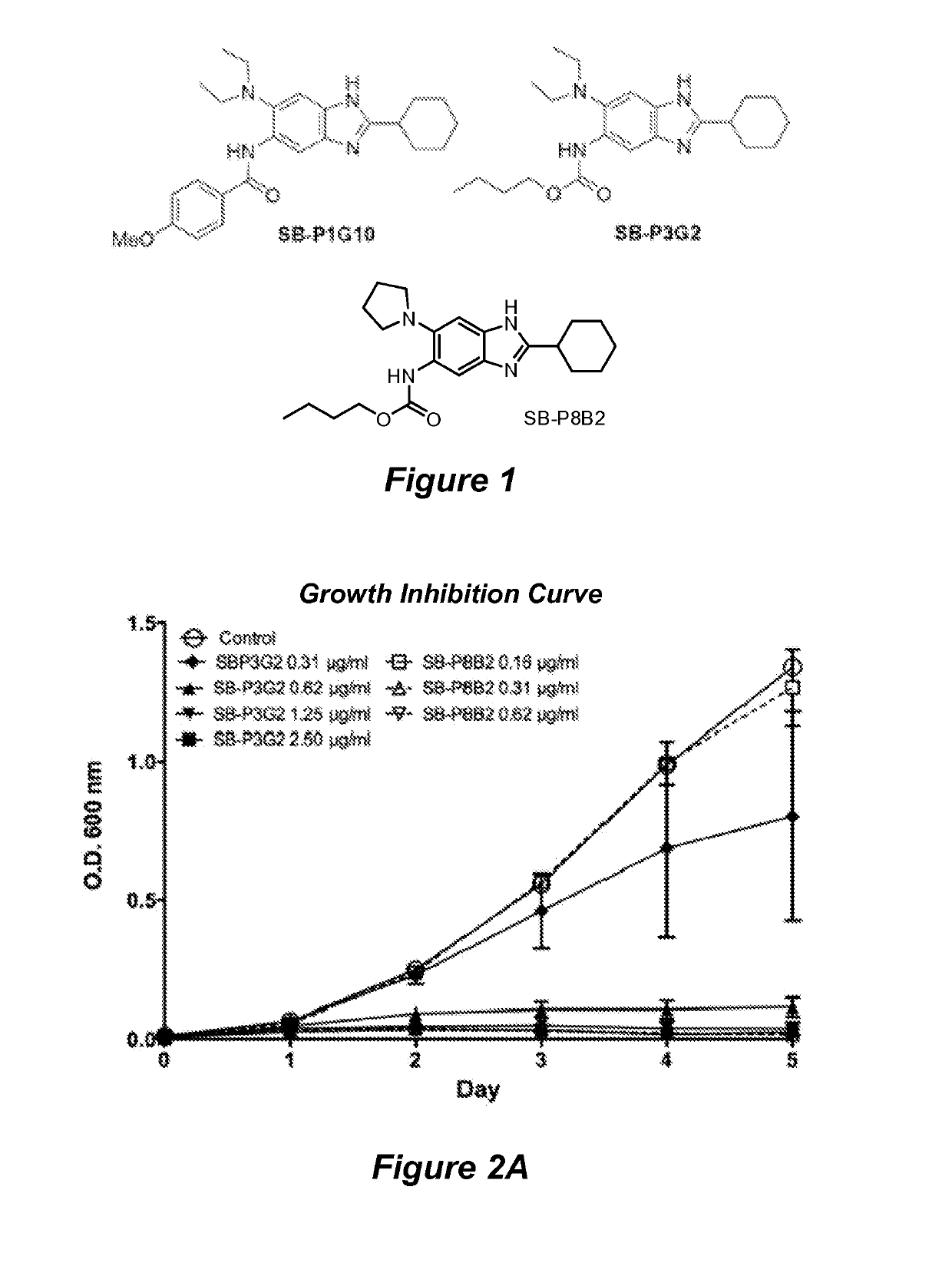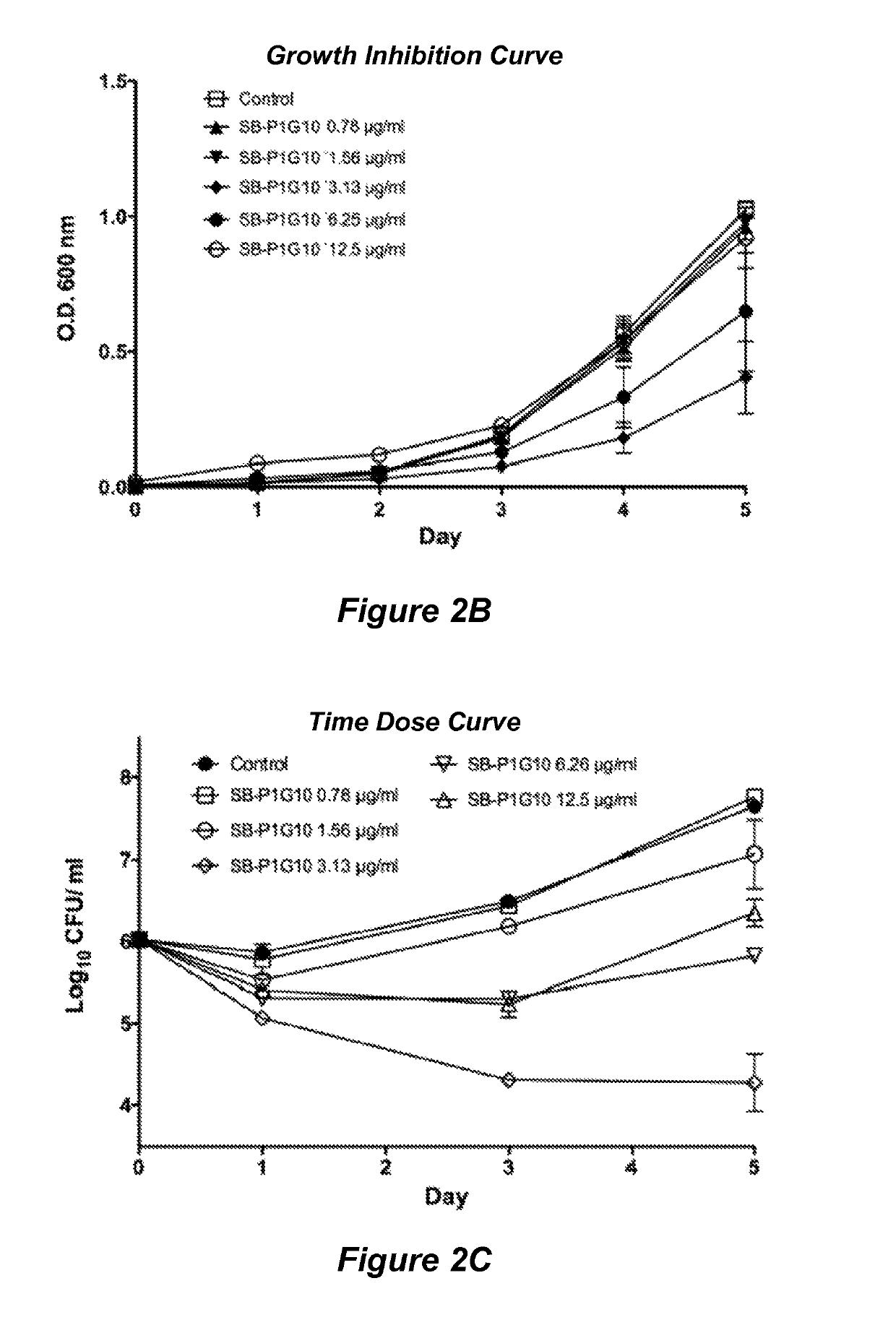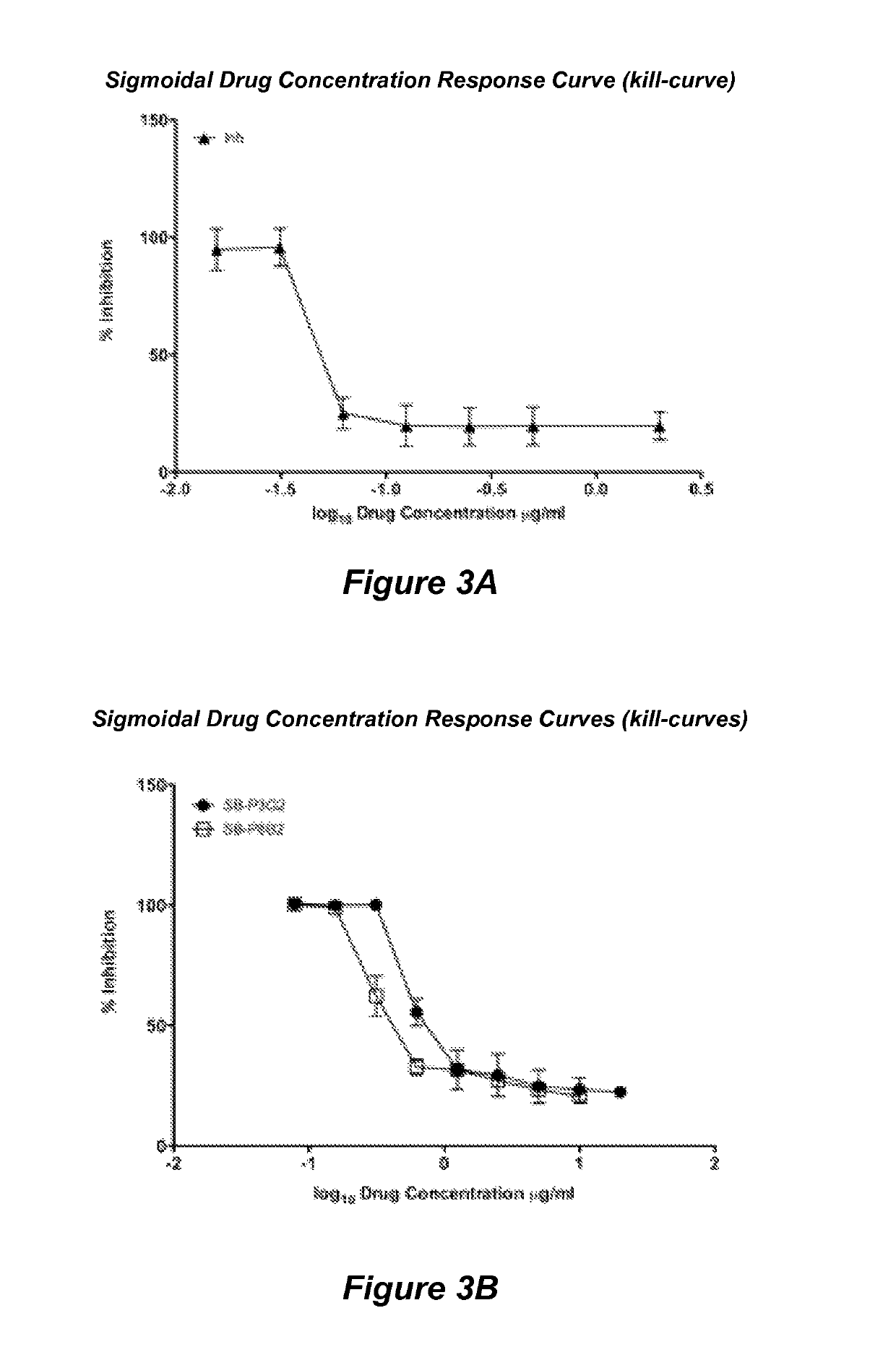Methods for in vitro—in vivo efficacy determination
a technology of in vitro and in vivo efficacy, applied in the field of in vitro — in vivo efficacy determination, can solve the problems that the determination of in vivo efficacy of second-line drugs cannot be determined, and affect the management of disease, so as to inhibit the growth of m
- Summary
- Abstract
- Description
- Claims
- Application Information
AI Technical Summary
Benefits of technology
Problems solved by technology
Method used
Image
Examples
example 1
or Improved In Vitro-In Vivo Efficacy Determination
[0079]Structure based drug design was used to develop a library of novel 2,5,6- and 2,5,7-trisubstituted benzimidazoles. Three lead compounds, SB-P1G10, SB-P8B2 and SB-P3G2, were selected from this library for advanced study into their in vitro characteristics, potency against clinical strains and non-replicating persistent bacilli, and their efficacy in murine models of tuberculosis. In vitro studies revealed that SB-P8B2 and SB-P3G2 had sigmoidal kill-curves while in contrast SB-P1G10 showed a narrow zonal susceptibility. The in vitro studies demonstrated that exposure to SB-P8B2 or SB-P3G2 was bactericidal, while SB-P1G10 treatment never resulted in complete killing (i.e., SB-P1G10 is bacteriostatic at elevated concentrations). The dose curves for the three compounds against clinical isolates were comparable to their respective dose curves in the laboratory strain of M. tuberculosis. SB-P8B2 and SB-P3G2 also exhibited antibacteri...
example 3
ation of Next-Generation Benzimidazole-Based Cell Division Inhibitors with Efficacy Equivalent to Isoniazid
[0194]Compounds in the 2,5,6- and 2,5,7-tribstituted benzimidazoles have demonstrated antitubercular activity and efficacy in animal models of infection. We therefore performed additional studies to identify next-generation benzimidazole-based cell division inhibitors with efficacy equivalent to isoniazid.
[0195]Although there are drugs for the treatment of TB, the increasing number of clinical strains resistant to one or more of the frontline drugs in resulting in increased complications in disease management. Structure-activity relationship (SAR) and plasma / metabolic stability studies have led to the development of next-generation benzimidazoles. The lead benzimidazole compounds where evaluated for potency against M. tuberculosis H37Rv and representative clinical strains, toxicity and kill characteristics. Plasma and liver microsome lability studies were performed to assess co...
PUM
| Property | Measurement | Unit |
|---|---|---|
| concentration | aaaaa | aaaaa |
| volume | aaaaa | aaaaa |
| concentrations | aaaaa | aaaaa |
Abstract
Description
Claims
Application Information
 Login to View More
Login to View More - R&D
- Intellectual Property
- Life Sciences
- Materials
- Tech Scout
- Unparalleled Data Quality
- Higher Quality Content
- 60% Fewer Hallucinations
Browse by: Latest US Patents, China's latest patents, Technical Efficacy Thesaurus, Application Domain, Technology Topic, Popular Technical Reports.
© 2025 PatSnap. All rights reserved.Legal|Privacy policy|Modern Slavery Act Transparency Statement|Sitemap|About US| Contact US: help@patsnap.com



